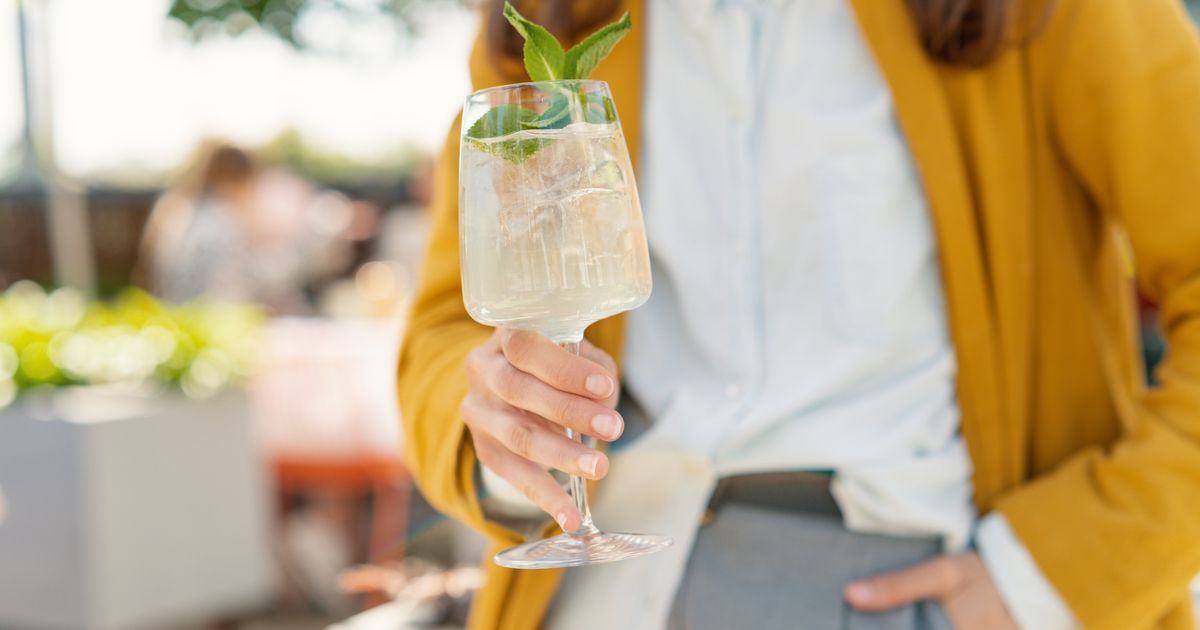From the espresso martini to the Dirty Shirley, a plethora of delectable cocktails have competed for the coveted title of “drink of the summer” throughout the years. However, this year, a new contender may be challenging the classic Aperol spritz for its reign: the Hugo. Expert mixologists and social media influencers have hailed this refreshing cocktail as the latest “it” drink. But how new is the Hugo, and does it live up to the hype? Let’s dive into what you need to know.
So, what exactly is a Hugo? According to Rysse Goldfarb, a cocktail expert and founder of Mommy Mixology, the Hugo falls into the spritz category. It’s a sparkling, low-alcohol beverage made with elderflower liqueur, prosecco, soda water, and fresh mint. It’s typically served over ice in a wine glass, but lime slices, wedges, or even a dash of gin can also be added for extra flavor.
While traditionally enjoyed as an aperitif before a meal, the Hugo is versatile enough to be consumed at any time, especially during al fresco dining in warmer months. The most popular elderflower liqueur used in the Hugo is St-Germain, a French brand known for its hand-picked elderflower blossoms and 20% alcohol by volume. However, there are non-alcoholic alternatives such as elderflower cordial or syrup that can be used as well.
Regardless of the specific ingredients chosen, the Hugo promises a light and balanced combination of flavors. As Joseph Fredrickson, national board director of the United States Bartender Guild, describes it, the cocktail offers a delightful blend of floral and minty notes with a fizzy honeysuckle essence from the prosecco. It’s a perfect companion for a warm summer day spent basking in the sun with loved ones.
But where does the Hugo originate from? According to bartender Calliope Draper, it can be traced back to around 2005 on the Austrian-Italian border. Bartender Roland Gruber, also known as A.K., is credited with inventing the cocktail at his bar San Zeno in Naturns, Italy. The original recipe featured prosecco, soda, fresh mint, and a splash of lemon balm syrup. Inspired by the legacy spritz drink known as the white spritz, the Hugo embraces the freshness of mint and citrus, combined with prosecco and carbonated water.
Since its creation, the popularity of the Hugo spritz has rapidly spread across Europe, becoming a staple in aperitif culture. It’s commonly enjoyed in Italy, Austria, Germany, and beyond. In fact, it has even made its way into canned ready-to-drink beverages, surpassing the popularity of American canned seltzers.
When compared to other spritzes like the iconic Aperol spritz, the Hugo offers a distinct difference. While the Aperol spritz boasts a bitter profile with bright orange citrus notes, the Hugo takes a sweeter and more floral route. Its approachability sets it apart, appealing to those who may not enjoy bolder flavors. The combination of mint, elderflower, prosecco, and soda water creates a simple and easy-to-sip cocktail with a fruit-forward, floral, and balanced flavor profile.
So why is the Hugo gaining so much popularity? One reason is its appearance on various social media platforms like TikTok, where people are sharing videos on how to make Hugo spritzes. Additionally, the spritz category as a whole has experienced a surge in popularity, especially in North America, as people embrace international travel again and seek out social rituals after the COVID-19 pandemic. The low-alcohol content of the Hugo aligns with the growing trend of mindful drinking, allowing individuals to enjoy a light and refreshing beverage without the heavy effects of excessive alcohol consumption.
The Hugo’s rise can also be attributed to its simplicity and accessibility. With easily accessible ingredients, it can be made at home without fancy techniques or tools. It’s a straightforward combination of ingredients that can be found at local liquor stores or supermarkets. Its clear hue and utilization of fresh mint give it a natural and appealing aesthetic. Moreover, the use of fresh ingredients aligns with the shift towards natural and authentic flavors in the culinary world.
Overall, the Hugo strikes a balance between attainability and aspiration. It’s a cocktail that sparks curiosity and intrigue while remaining approachable and easy to recreate. Variations of the Hugo spritz are likely to continue emerging, allowing for experimentation with different herbs, sparkling wines, and flavors.
So, if you’re seeking a refreshing and trendy summer cocktail, the Hugo might just be the perfect choice. Whether you’re lounging by the pool, hosting a backyard gathering, or simply looking to elevate your cocktail repertoire, the Hugo offers a delightful and vibrant experience that’s sure to impress. Give it a try and see why this spritz is capturing the hearts (and taste buds) of cocktail enthusiasts everywhere.
Denial of responsibility! VigourTimes is an automatic aggregator of Global media. In each content, the hyperlink to the primary source is specified. All trademarks belong to their rightful owners, and all materials to their authors. For any complaint, please reach us at – [email protected]. We will take necessary action within 24 hours.


